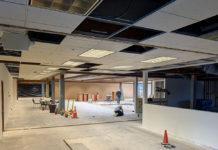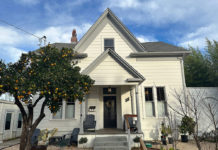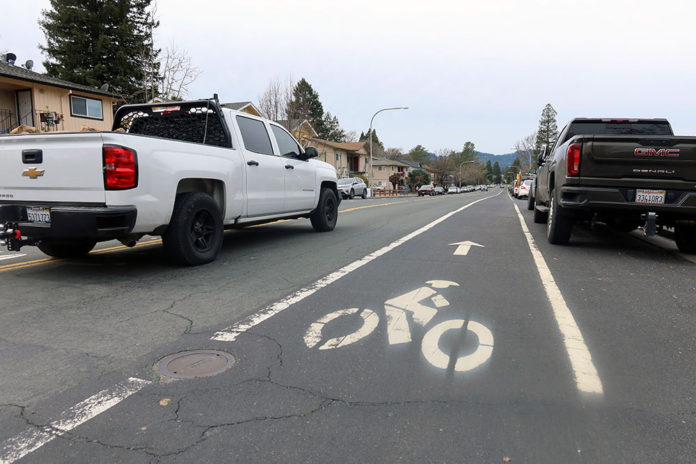
At its most recent meeting on Feb. 3, the City Council approved a $280,000 design contract for the March Avenue Improvement Project, which could lead to work beginning by the end of summer 2025.
The project was the first significant road project to come before the council since, two weeks earlier, it passed an Active Transportation Plan (ATP) that in part prioritizes non-vehicular travel, such as foot paths or bike lanes.
It didn’t take long during principal engineer Clay Thistle’s presentation to find out what major design features of a renovated March Avenue, from University Street to the intersection with Healdsburg Avenue, would be included: improved curb access, bump-outs and more visible crosswalks at Lupine and Prentice, and a greatly improved surface.
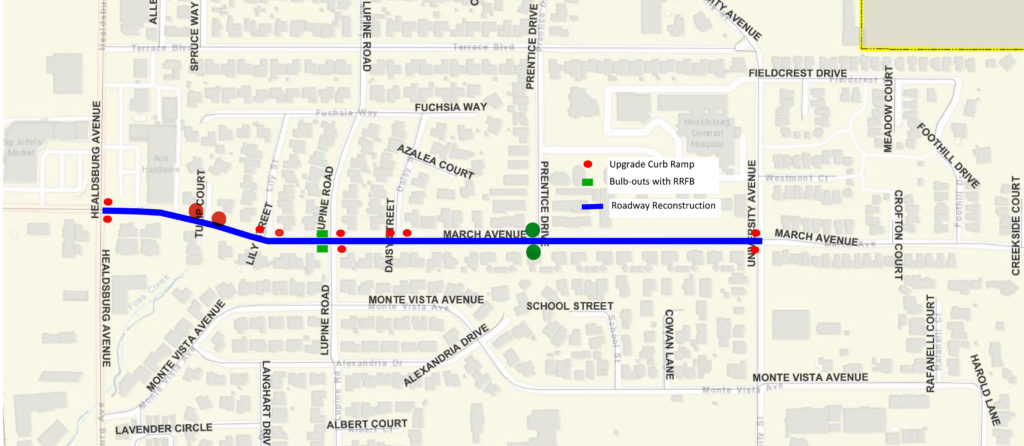
That seemed to please Mayor Evelyn Mitchell, who said she had just moved to the area and already needed new shock absorbers.
It did not so much please others in the room, who felt that some things missing in this design presentation really should have been included, in light of the ATP just approved. Councilmember Ariel Kelley, the first to point this out, asked what elements of the design spec might be seen as compliant with the ATP.
“Can you speak to how this project does or doesn’t comply with what the recommendations are in the Active Transportation plans, or what the proposed bike and ped [pedestrian] improvements are that people have been emailing us about?” Kelley asked. “I think there’s a disconnect between what you guys are proposing and what the community [believes] is included in the project.”
Thistle cited three ATP-compliant recommendations—two of them pedestrian-favoring, such as curb ramps and improved road crossings, while the third would allow “for city staff to consider the feasibility of implementing parking-projected separated bike lanes.”
Time to Talk?
Kelley pressed for a more well-noticed public meeting to discuss the March Avenue improvements, especially with an ear to hearing from the bike and pathway advocates who had already expressed disappointment with the design plan as proposed. Thistle seemed open to the idea of greater public engagement, “pending direction from the council.”
Judy Fujita of Brown Street reiterated the city’s own position that March Avenue is a major East- West corridor, saying “so I really think that we should do this one right.” That would include strongly supporting Active Transportation priorities such as safer streets and the need for bike lanes—traffic calming, clear signage—and allow public input on a design phase that would make March Avenue a “template” for other East-West corridors in town.
Mark McMullen also commented in the meeting, proposing to include “art” into the design through the new Arts & Culture Commission. However, in his letter to the council delivered earlier in the day, he also found concerning the absence of ATP priorities, the Climate Mobilization Strategy and the city’s Diversity Equity and Inclusion plan, as well as Arts & Culture Commission engagement.
“I think to bring this project into line with these plans, public outreach is necessary very quickly,” he said—including bilingual workshops during the design phase to hear input on protected bike lanes, ADA improvements, green infrastructure and arts integration.
Kelley returned to the idea of public engagement in a community meeting of some sort, but other members of the council seemed less keen on the idea, fearing delay in the overall project even though they said they valued public comment.
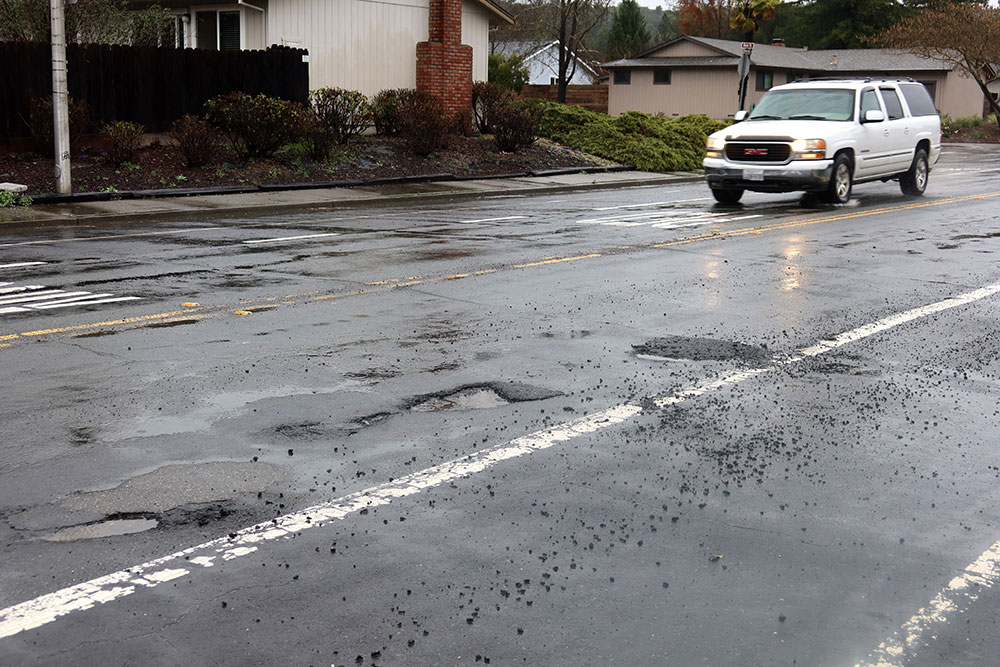
Councilmembers Ron Edwards and Mayor Mitchell in particular seemed disinclined to open up the process to further public review. “I certainly want to hear from the community, but I don’t want to slow it down,” Mitchell said.
The next afternoon, Public Works Director Larry Zimmer told the Tribune, “Based upon the input received last night from Council we will be revising the public engagement plan for the project. It is envisioned that the revised plan will include a community meeting likely followed by a presentation to Council to confirm the design concept.”
He said the community meeting is probably about three months out, with the presentation to council one or two months after that. Once the council approves it the project goes out for bid, which can take up to four months to complete.
Construction, anticipated to take about a year, could begin as soon as December, depending on the weather. The current construction estimate is $2,175,000, Zimmer said.
However, the extreme rainfall events of the past few weeks caused concern about the rapid deterioration of the surfacing on March Avenue, the source of many residents’ unhappiness with the corridor.
Zimmer, when asked about the current condition of the avenue and the delayed start time for its repair, said, “We will continue to fill potholes.”

